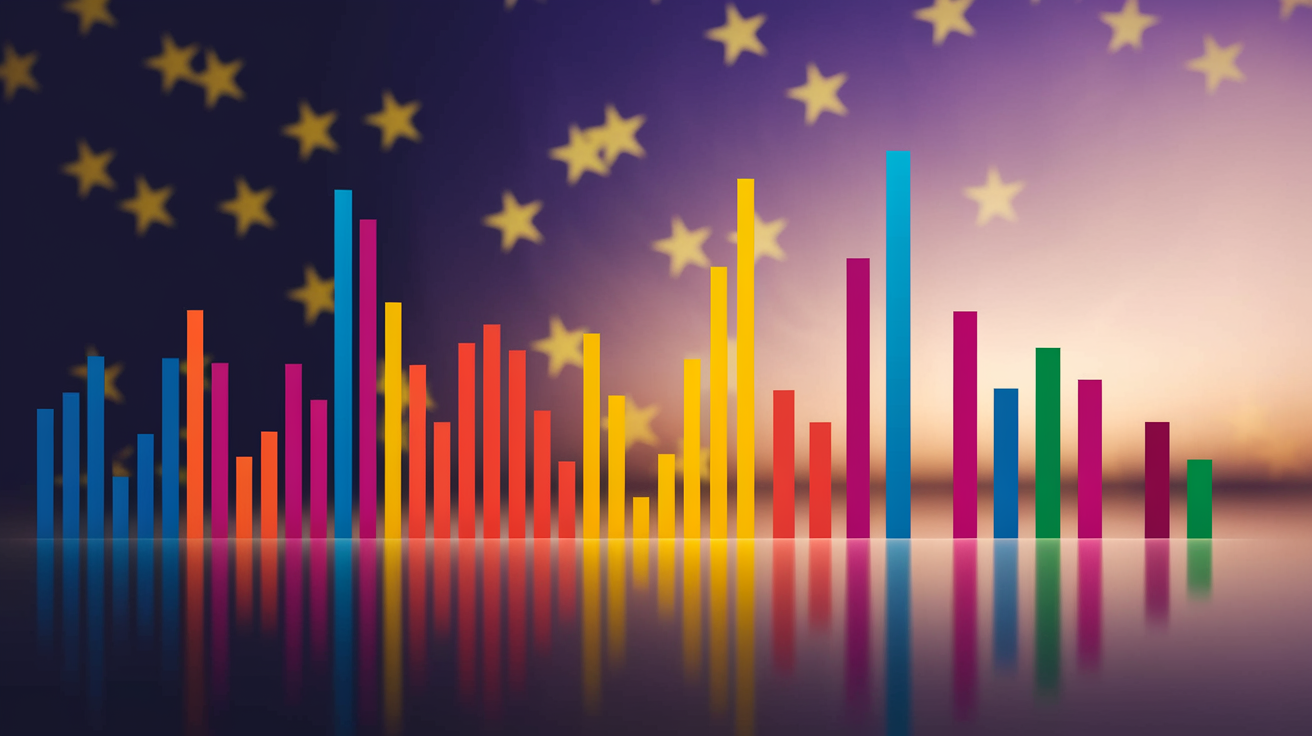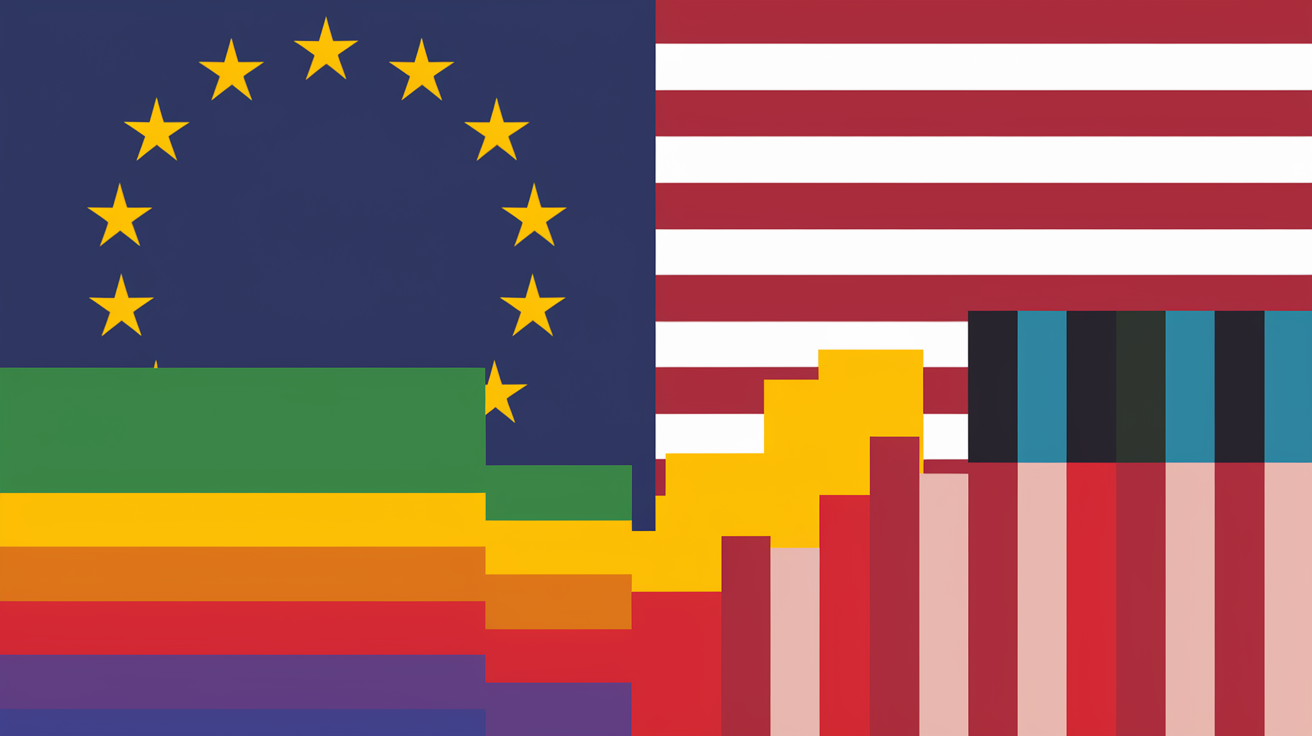The price-earnings ratio (P/E) is a key indicator that helps investors better understand stock market valuations. While the Euro Stoxx 50 often stands out for having a lower P/E, the S&P 500 shows a higher valuation. These differences not only reflect market conditions but also the economic expectations on both sides of the Atlantic. In this article, we highlight the differences in P/E ratios and the economic factors that influence them.
A Deeper Analysis: P/E Comparisons Between Euro Stoxx 50 and S&P 500

The price-earnings ratio (P/E) is a fundamental financial indicator that plays a central role in the valuation of stock markets around the world. By comparing the Euro Stoxx 50 with the S&P 500, the differences in P/E provide an interesting insight into the different dynamics of the European and U.S. markets.
The Euro Stoxx 50, a representative index of European blue-chip companies, traditionally shows a lower P/E compared to its American counterpart, the S&P 500. Currently, the P/E of the Euro Stoxx 50 typically falls between 14 and 17. This lower valuation, compared to the P/E of about 28.5 for the S&P 500, may signal to investors that European markets offer more affordable entry prices, particularly for those seeking attractive investment opportunities from a cost perspective. This discrepancy is not new but is deeply rooted in historically determined market differences.
In contrast, the S&P 500 reflects the strong performance and superior growth potential of U.S. companies, particularly driven by the innovative technology sector. This strong economic performance is often accompanied by higher valuations, which are evident in the exceptional P/E of the S&P 500. While some investors may be discouraged by these high valuations, others see continued confidence in the U.S. economy.
A deeper analysis reveals that the lower P/E ratios of European stocks are often considered more attractive, as they may suggest potential value yet to be discovered. This fact increasingly attracts U.S. investors who wish to diversify their portfolios globally by investing in European markets. At the same time, the S&P 500, despite its higher valuations, offers the advantage of security and stability, supported by a robust U.S. economy.
Thus, this P/E comparison not only shows the divergences in valuations but also how investment preferences may be influenced by these differences. Investors see in European markets not only an alternative to the higher valuations in the U.S. but also a promise of a potentially more stable growth due to Europe’s more conservative valuation paradigms.
Economic Influences and Their Impact on the P/E of Euro Stoxx 50 and S&P 500

The price-earnings ratio (P/E) is a fundamental indicator that helps investors evaluate the valuation of stock markets like the Euro Stoxx 50 and the S&P 500. A number of economic factors directly influence the P/E of these indices. These factors include interest rates, inflation, geopolitical uncertainties, corporate performance, and exchange rates.
Interest rates and the monetary policy of central banks play a decisive role. An increase in interest rates typically leads to a decrease in the P/E, as financing costs rise and stocks become less attractive compared to fixed-income investments. The European Central Bank (ECB) and the Federal Reserve of the United States have adjusted interest rates in recent years to ensure economic stability.
Similarly, the inflation rate significantly impacts the P/E. While high inflation can reduce purchasing power and weigh on corporate margins, strong economic growth increases corporate earnings, leading to a rise in the P/E. The United States is experiencing strong growth, while in Europe, regional differences exist that can also affect the P/E.
Geopolitical uncertainties contribute to market volatility. Political tensions and risks often lead to more cautious investment behavior, which can negatively affect the P/E. European markets, in particular, are significantly influenced by political developments, which is reflected in the reluctance to invest from abroad.
However, corporate performance and industry trends provide positive impulses for the P/E. Technological advancements, especially in artificial intelligence and sustainable technologies, increase investor interest. Companies with innovative business models and strong brands often have higher P/E ratios.
Finally, fluctuations in exchange rates affect the competitiveness of companies. A strong euro can hurt exports from European companies, while a strong U.S. dollar impacts U.S. international trade. These dynamics are reflected in the P/E ratios of Euro Stoxx 50 and S&P 500 and illustrate how complex the interplay of economic factors is that shapes the perception and valuation of stock markets.